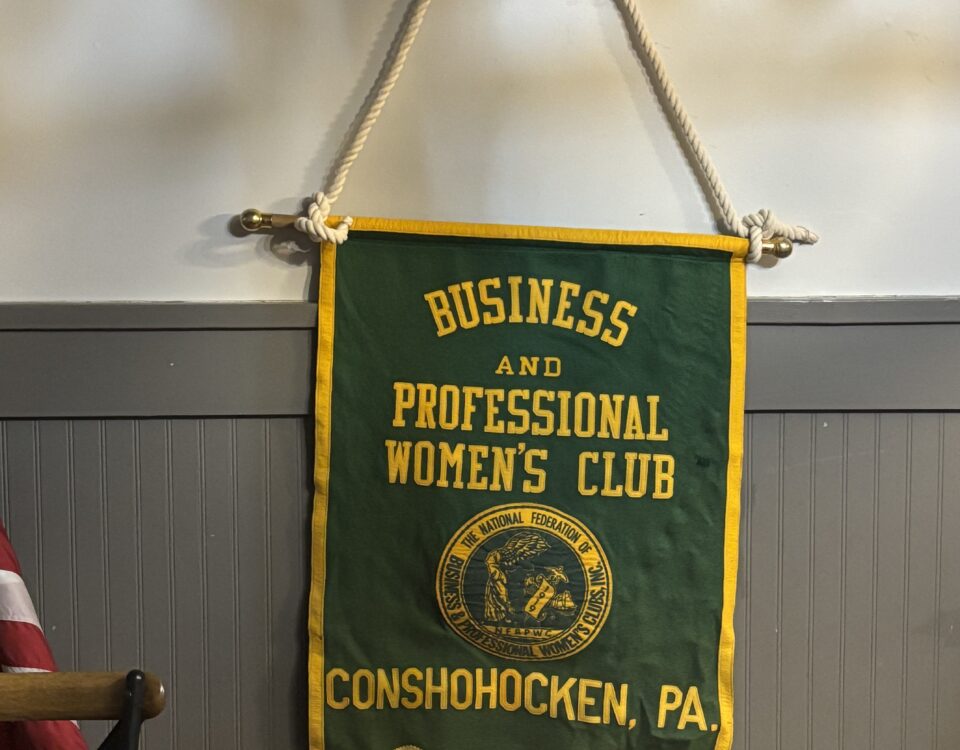
Miss Lorraine Gambone – We’ll miss you
March 2, 2023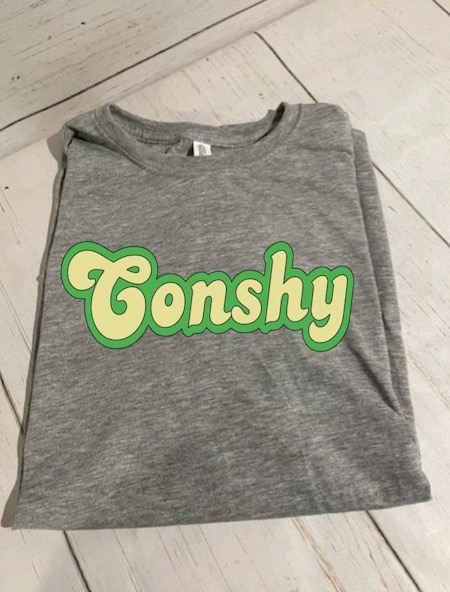
Shirt of the Month
March 7, 2023Ever Wonder About our Traffic Lights?
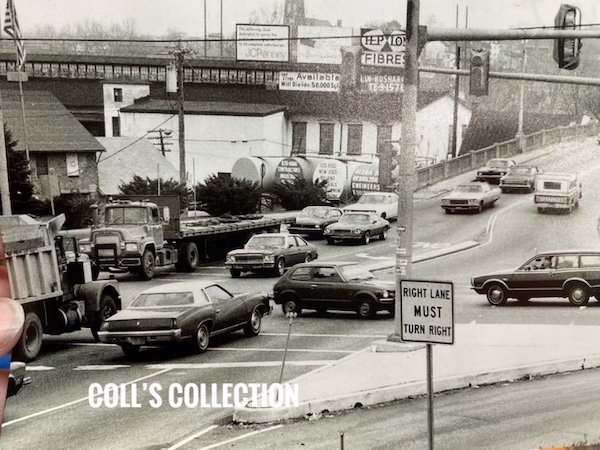
Cleaning up my files
Ever Wonder About Our Traffic Lights?
Me Neither
By Jack Coll
1-25-23 (published 3-5-23)
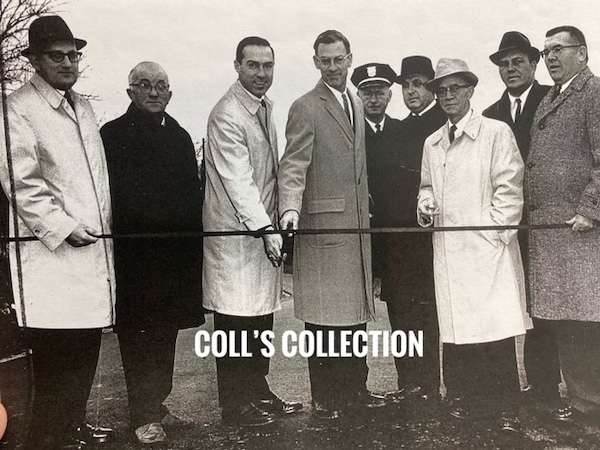
I seem to be finding more time in my office lately as the winter evenings turn dark early, giving me time to further organize my files. As a lot of you know I have a third-floor library that I started assembling more than 45 years ago filled with Conshohocken history that includes photographs and hundreds of files on everything from past and present residents to the many buildings that have come and gone and everything in-between.
It’s happened more than once where I’m going through my many files and I wonder, “What the Hell am I ever going to use this information for?” Well, I recently ran across one of those files and thought I would try to make sense of it, write a short article and share it with our readers and then you readers could have this useless information stuck inside your heads.
So, the file is titled, “Street Traffic Lights,” I was wondering just how exciting this file could be, well, let me warn you up front before you read the rest of this article, it’s not very exciting at all. But because I have the file, I’m gonna finish the article and perhaps a few of you might enjoy knowing the information contained in the file. The information might come at you a little choppy as I really don’t have a beginning, a middle, or an end for this article, but here are the contents of the file.
So, the oldest notes on Conshohocken streets I have goes back to 1850, the year Conshohocken was incorporated as a borough. One of the first entries on a page titles “Street Acceptance and Opening,” a line dated April 13, 1863 stated “To Open Front Avenue from Fayette to Woods Line.” I’m assuming Front Avenue turned into “Washington Street.”
During the early years Washington Street was laid out as the borough’s Main Street. The Conshohocken Post Office and the town Hotel/Bar were located on Washington Street within a stone’s throw from the Conshohocken train station. A few small shops and the borough’s industry were also set-up along Washington Street. As the population grew, retail shops started opening at an alarming rate so the buildings pushed-up the hill along what would become Fayette Street.
An entry dated May 9, 1866 noted that “To open Fayette Street to its full width between 3rd and 4th Avenues and property owners were to remove their fences back, and said street to be graded.” Another entry dated February 13, 1867 stated, “To open Canal Street on the south side from Fayette Street to Filbert Street and Filbert Street, from Canal Street to Elm Street.”
It is kinda interesting because as I read through these pages you can get a feel as to how the town developed, for instance, on February 10, 1869, “To open Front Avenue from Fayette Street to Maple Street and property holders to remove all obstructions therefrom on or before the first day of April, 1869.” I have a full listing as to when each and every street in the borough was officially opened. Keep in mind if you stood at the foot of the Matsonford Bridge in 1850, and looked up the hill, well, there were no roads, houses, trolley tracks and certainly no traffic lights, just woods.
******
A few side notes; pages in the file, one dated December 1, 1908. “Shall The Turnpike Be Fenced Up.” Well for those of you who don’t know back at the turn of last century the upper portion of Fayette Street was the Conshohocken Turnpike, there were five toll houses between Conshohocken and Ambler along Fayette Street and Butler Pike. Conshohocken’s toll house was set up at Twelfth Avenue in the middle of Fayette Street, back then known as Conshohocken Pike, If I’m not mistaken there are still two toll houses still standing along Butler Pike where horse and wagons had to stop and pay a toll.
******
A small article from 1890 tells of a speeding problem within the borough limits. Burgess William Smith was concerned about “Hot Rodders.” An ordinance headed “Fast Driving” set up the following regulation on July 11, 1890. “That from and after the passage of this ordinance, it shall be unlawful for any person to run or race a horse, mare, or gelding in any of the streets of the borough or ride or drive through any of its streets in a reckless or dangerous manner or faster than seven miles an hour.”
******
If I’m not mistaken the very first horseless carriage, (automobile) came to Conshohocken in 1903, Joseph McGrath was the first borough resident to obtain a driver’s license. Within six years the borough of Conshohocken had set up speeding laws for automobiles, one of the first residents to break the law was none other than John Elwood Lee, owner of Lee Surgical Supplies and the owner of an up-and-coming tire factory known as the John Elwood Lee Tire Factory.
******
On a side note, when the new Matsonford Bridge opened on November 11, 1921, the state of Pennsylvania Traffic Control Commission determined that the new bridge would handle up to as many as 100 motor cars a day crossing the bridge.
******
Less than five years later in the spring of 1926, traffic was so heavy that the borough decided to install their very first traffic light and put it into operation on April 10, 1926. (Actually, they installed three traffic lights) The lights, or as they were known back then, “Traffic Lamps,” were installed at the intersection of Fayette Street, at Elm and Hector Streets, and First Avenue. The Conshohocken Recorder Newspaper from April 13, 1926 went to the trouble to explain just how the traffic lamps would work.
Here’s a small portion of the April 13, 1926 newspaper article:
“Each lamp regulates traffic in two streets. The green light is the signal for go: the red light stops traffic and the amber light with the words on the globe “Left turn permits traffic to make the turn while all other traffic is stopped.” The “left turn” caused some confusion in the first test as many motorists familiar with the amber light as warning signal preceding the green or the red light failed to notice the words “left turn.” Chief Heald and Officer Himes were on duty at Hector and Fayette Streets during the test and guided the traffic.
Many jams occurred and all were caused by trolley cars. The inbound car stopped in Fayette Street and discharged passengers before rounding the turn into Hector Street. The outbound car was on the Fayette Street spur. The car bound into Hector Street could not make the turn until the amber or left turn light appeared although Fayette Street showed-go. Motorists seeing the trolley stopped, did not pass and a jam was caused above Hector Street. The car on the spur could not continue up Fayette Street although the green or “go” light was on and motorists waited for the trolley to move. This caused a jam below Fayette Street. The jam was further increased as the red light followed the amber or “left turn” light and held the up-street traffic until the green light again appeared.”
(I don’t know but it sounds a little bit like what’s happening today during rush hour down by the bridge!) also, (for those of us complaining about traffic down around the bridge, well, apparently, we’ve had traffic problems down there for nearly 100 years.)
The article went on to say that it was noticeable during the tests that out-of-town drivers obeyed the signals while nearly all the violations were by the home folks. By-the-way, the traffic lights were only turned on for Friday and Saturday evenings for a number of years. However, in April of 1936 that all changed when it was announced that the traffic lights at all three intersections were pressed into service full time and would be operating daily from 6:30 A. M. until 1 A. M.
******
This piece might interest someone, in 1930 Montgomery County Commissioners determined that traffic lights were not needed at the intersection of Ridge and Butler Pikes even though a number of automobile accidents had been reported at the intersection. The Commissioners gave-in on installing the traffic lights in January 1931, and thirty days later the first accident was recorded since the lights were installed. Of course, it involved a Conshohocken man, Elmer Boyer and F. E. Allebach of Skippack. Neither one was injured by the accident, but the report claimed that over $50.00 of damage was done to the Alleback car.
******
Well, according to newspaper articles upper Fayette Street had turned into a speedway by the mid 1930’s and something had to be done. So, three more traffic lights were installed in an attempt to slow down traffic. Lights were installed on Fayette Street at Third, Sixth and Ninth Avenues. According to the borough engineers, everything was working satisfactorily. So, let’s read a little bit about the new lights that were working satisfactorily.
Taken from the Conshohocken Recorder Newspaper, July 30, 1937:
“There has been considerable discussion concerning the manner in which the various colors flash. The lights are so timed that they flash green, amber and red on one side and only red and green on the other side. This is the same method employed in directing traffic in the Parkway in Philadelphia, according to the engineer and is employed to lessen the danger of accidents at intersections when cars have been stopped. With the amber showing in both directions all of the cars are privileged to start at the same instant. With the amber showing on only one side, the driver traveling at right angles where the red signal holds them at a standstill until it is swung to green.”
Help me out here, we’ve had two explanations from engineers as to how traffic lights work, and I don’t understand either.
******
In 1946 Conshohocken Borough Council members voted in favor of installing 250 parking meters to be installed on Fayette Street, Marble, Hector, Elm and First Avenue. The parking charge was set at five cents per hour, if you didn’t need an hour at the meter, you could pay one cent per twelve minutes. There was no mention of the amount of the fine for parked cars at expired meters.
******
In January of 1946, a newly elected Borough Council voted to purchase a strip of land located on West Eleventh Avenue owned by John Wiley for $1500. The motion to purchase the Wiley land was made by Mr. Gravinese and seconded by Mr. McCarter after Frank Sutcliffe, (not Frank Sutcliffe the husband of Mary Jane whom Sutcliffe park was named after and donated by Frank.) And it wasn’t Col. Frank R. Sutcliffe who served in the Air Force and was married to the former Doris Rigg of West Conshohocken, he passed away in 1962 but Frank M. Sutcliffe who was married to Alice Rubery and lived at the bottom of West 11th Avenue but before it was opened to Colwell Lane because Mr. Wiley owned the ground prohibiting West 11th Avenue to be opened completely to Colwell Lane.
Frank M. Sutcliffe attended many of the borough council meetings during that time trying to convince them to purchase the land from Wiley so the borough could open up the dead-end and complete West Eleventh Avenue clear-through to Colwell Lane.
(So current West Eleventh Avenue residents have Frank Sutcliffe to thank for being able to drive up your street from Colwell Lane)
**********
(A little speculation on my part!)
The photograph showing the 400 block of West Eleventh Avenue, was taken from the other side of Colwell Lane. I’m fairly sure the 400 block of West Eleventh Avenue was developed by Frank Sutcliffe’s reality firm. I’m also fairly sure that the farmhouse seen in the center-bottom
belonged to John Wiley, who also owned the property on lower West Eleventh preventing the borough to open-up the avenue through to Colwell Lane. This photograph was taken sometime in the late 1930’s or early 1940’s. Notice the car at the bottom of the photo traveling along Colwell Lane, at that time, still a dirt path.
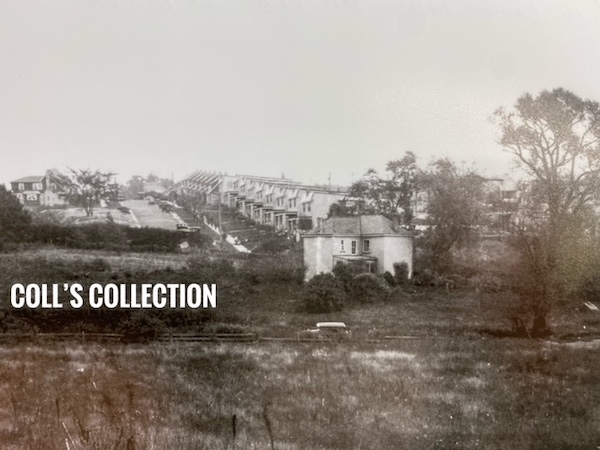
******
In early October of 1947, borough council voted to contact the State for a traffic light installation at the intersection of Elm and Maple Streets. However, a week later council met and reversed that decision and agreed that a traffic signal was not needed at that time.
******
I don’t know when diagonal parking on lower Fayette Street started, (I think it was the late 1930’s) but in the fall of 1958 diagonal parking was eliminated in favor of parallel parking on the west side of Fayette Street from Second Avenue down to Marble Street. This move cut the parking inventory in the main business area by fifty percent. By cutting parallel parking from Second Avenue down to the bridge meant traffic went from one lane to two lanes relieving massive traffic jams that resulted in traffic backing-up to Sixth Avenue at times. It was estimated by the Conshohocken Chamber of Commerce that more than 600 customers a day visited lower Fayette Street, and most had trouble finding parking, or found no parking hurting businesses to the point of boarding up their store fronts and moving out of town.
A few weeks later the Riant Theatre made it clear that the lack of parking forced them to go from showing movies seven days a week and cut back to four days a week due to the parking situation.
Within a few weeks borough council reversed their decision and once again set up the street for diagonal parking, I’m not sure the Riant Theatre ever recovered from among other things, the loss of parking spaces.
******
In July of 1953 a new traffic light was installed at Hector and Fayette Streets. The installation contract was awarded to Howard F. Wampole of Philadelphia. There were two, two-way and one-way signals on high poles with overhead wiring. (Original street lights installed were usually mounted on cables.) The cost of the new signals in 1953 were $1,630.26. This new signal had a really advanced twist, the signal could be controlled from the fire house by the Washington Fire Company when their fire trucks needed quick access on their way to fires.
******
In 1954, the state approved one-way traffic for Hector and Elm Streets. Parking was also banned from First Avenue down to the bridge between 3:30 and 6P.M. in an effort to relieve congestion.
******
In June of 1954, the first traffic signal was erected on Ridge Pike at North Lane and Colwell Lane.
The intersection had long been one of the most hazardous traffic areas along the Ridge in our area.
The unique thing about this traffic light installation was that Colwell Lane was equipped with an electric eye treadle, which, as a car passes over it, puts into operation a cycle which gives the Colwell Lane motorist a green light.
******
In August of 1954 a 60-mile-per-hour speed limit went into effect for the 13-mile stretch of the Schuylkill Expressway from King of Prussia to City Line. In 1959 it was reported that deaths on the expressway had risen from eight deaths in 1958 to nine deaths in 1959. In 1959, 219 accidents were reported some of them were multi-car accidents.
******
In February of 1956 it was recommend by the borough public safety committee to send a request to the State Highway Department to get approval for a new traffic light to be installed at 11th Avenue and Fayette Street because of the heavy Fayette Street traffic and the proximity of the Athletic field located at nearby 11th Avenue and Harry Street. At that same meeting a STOP sign was approved for the intersection of Ninth Avenue and Maple Street.
******
I see a traffic light installation was approved by the board of commissioners of Plymouth Township in 1961 for a traffic signal to be installed at Germantown Pike and Chemical Rd.
******
In the late 1940’s and early 1950’s more than a few residents were complaining about the condition of Caldwell Lane. The lane was deemed impassable between Tenth and Twelfth Avenues. It was noted that driving was extremely hazardous and damaged automobiles were not uncommon. Passengers were badly jostled riding over the thoroughfare.
It was called Caldwell Lane going back to the turn of last century. However, the road was originally named Colwell’s Lane, named after Stephen Colwell. Colwell had his iron business in the Plymouth and Whitemarsh areas. Colwell would smelt his iron into ingots and transport them to the Alan Wood Steel Company located along Steel Plant Road/West Elm Street.
Colwell, who transported his iron ingots by horse and wagon would travel from his business in Plymouth Township, up North Lane from Ridge Pike, and turn right onto the Conshohocken Turnpike, Butler Pike and Fayette Street, (both dirt roads back then) where he would stop to pay a toll at the Toll House located at Twelfth Avenue and Fayette Street, travel down Fayette Street taking a right hand turn onto Elm Street and travel out the Steel Plant Road to deliver the ingots. Depending on the time of year and road conditions delivering the ingots could take more than two to three hours including the return trip.
We must remember that in the winter there were no snow plows and the snow-covered dirt streets could remain impassable for weeks at a time. When the rains came sections of Fayette Street were turned into small rivers washing away the dirt and leaving deep gullies particularly from Third Avenue down to the river. All of these foul conditions hampered Colwell’s ingot deliveries to the steel company.
So, in an effort to shorten his delivery time and cut back on the foul weather cancellations Colwell cut a path through the heavily wooded area leading from Ridge Pike and North Lane to Elm Street, a stone’s throw from his delivery post. That path was primarily used by Stephen Colwell and was appley named “Colwell’s Lane,” later renamed Colwell Lane.
In the summer of 1953 members of Borough Council agreed to fix Colwell Lane, not was it only impassable but still nothing more than a dirt path from West Sixth Avenue down to Elm Street. Colwell Lane was repaired in the 1950’s from Tenth Avenue to Twelfth Avenue. The lower portion of Colwell Lane from Sixth Avenue down to Elm Street wasn’t officially opened until December of 1965.
******

This useless information column seems to be running a little long so for those of you still reading let’s end with this little gem from West Conshohocken. In 1962 the intersection in West Conshohocken where Front Street meets the Matsonford Bridge/expressway entrance/ expressway exit/ Ford Street/Crawford Avenue/entrance and exit to and from Matsonford Road had no traffic lights, just stop signs, take a minute and think about that****. In December of 1962 borough officials met with Curtis Campman, Director of the Roads and Bridges Department of Montgomery County. Campman instructed council to give the needed approval of the plans for traffic lights so they could send the plans to the Pennsylvania Department of Transportation for approval.
All went well with the permits, traffic lights after all, since the Schuylkill Expressway opened in West Conshohocken a decade earlier were well needed.
Eventually traffic lights were installed at the intersection, but a decade later in 1977 controversy came to West Conshohocken when the borough council refused to pay the electric bill to operate these traffic lights. At that time West Conshohocken borough was having budget difficulties and decided that the traffic lights belonged to the state, and further decided it was their responsibility to pay the electric tab.
According to Pennsylvania State law the municipalities in which the traffic lights are installed are responsible for paying the electric bill and maintaining the lights and light structures.
So, by the fall of 1977, West Conshohocken Borough Council had had enough due to the budget shortfall and decided they weren’t going to pay no more stinkin’ electric bills for traffic lights that the state of Pennsylvania installed to control traffic flowing from the Schuylkill onto their state highway. When West Conshohocken didn’t pay the electric bill, the electric company turned off the power to the traffic lights. (Notice the photo from 1977 of the intersection the traffic lights were shut off)
The Montgomery County Commissioners pleaded with the borough to pay the bill, the Philadelphia Chamber of Commerce led by city councilman Thacher Longstreth got involved and asked the councilman to reconsider. West Conshohocken leaders pointed to the fact much of their tax base had been cut due to construction of the expressway, and the in-complete Blue Route, and much of the borough’s concerns and interest had been flagrantly ignored in the past.
Council determined that the traffic lights were not to their benefit but that of the state highway department and were clear that they had no intention of paying any electric bills for traffic lights, at that time it was the borough’s only traffic lights.
In the end State Senator Richard A. Tilghman got involved and met with West Conshohocken officials, the Montgomery County Commissioners, State Legislative’s, Penn Dot and Philadelphia Chamber officials. At that meeting the group developed a cost sharing agreement in principle, a cost sharing agreement that West Conshohocken Borough Council declined to ratify.

******
Looking through the rest of the Traffic Light file I don’t see anything interesting or worth mentioning, there’s road construction, traffic accidents, bla-bla. As I continue to re-organize my files I’ll try not-to bore you with my useless files.
Feel free to continue touching base with Conshystuff for great nostalgia articles, funny stories, what’s-up in the community and everything good about Conshohocken and vicinity.
And one last thing, if you find yourself in need of a service, please consider our advertisers. All of our advertisers are local and experts at what they provide. Thank you for supporting Conshystuff.
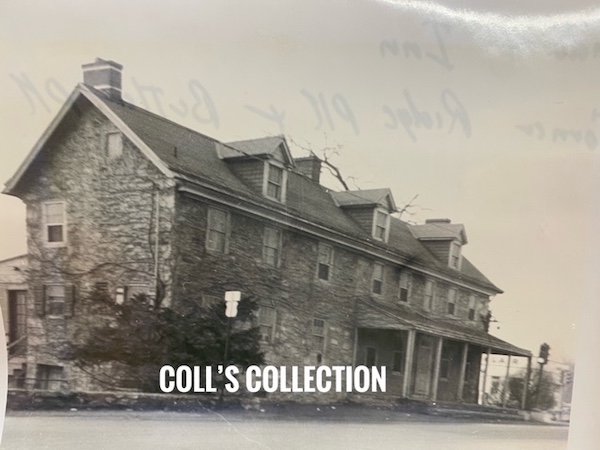
Photographs above include:
In 1965 dignitaries lined up at Sixth Avenue and Colwell Lane to cut the ribbon to officially open Colwell Lane from Sixth Avenue all the way to West Elm Street. Although there was a gravel driving lane through that section of Colwell Lane for construction vehicles working the quarry, it wasn’t until December of 1965 that the street was officially dedicated as an official borough street. From left the dignitaries included George Gunning, Chamber of Commerce President; John Andrey, Street Department Supervisor; Councilman Benjamin Hannum Jr., Mayor elect of Conshohocken; Howard W. Read, Executive Vice President of Alan Wood Steel Co: Raymond S. Alexander, Conshohocken Chief of Police; Anthony Baranowski, Councilman; Leon Smith, Chamber executive secretary; John Walsh Jr., Borough Secretary and Frank S. Zadroga, Council President.
The photograph showing West Eleventh Avenue sometime in the late 1930’s or early 1940’s, was taken sometime before John Wiley sold his property to the borough in 1946, allowing the borough to open-up West Eleventh Avenue from Freedley Street down to Colwell Lane.
There are two photographs of the bridge intersection taken from the West Conshohocken side of the bridge. The wide-angle photograph was taken in the early 1960’s when traffic flow at the bridge was controlled by STOP SIGNS!
Well sometime in the late 1960’s the Pennsylvania Department of Transportation installed traffic lights. By the fall of 1977 West Conshohocken Borough Council members decided that the borough could no-longer afford to pay the electric bill that operated the traffic lights. The power was cut-off to the lights and the lights covered-up, seen in the second photograph.
The photograph showing the stone building was the Andorra Inn once located at the corner of Ridge and Butler Pike, the photo was taken in 1931 shortly after a traffic light was installed at the corner. The light can be seen in the far-right hand corner of the photograph. The Andorra Inn was located just across the street from “The Pines” summer home for single mothers.

